Pollution Chapter Notes | General Science Class 8 (Maharashtra Board) PDF Download
Introduction
Pollution happens when harmful things mix with our air, water, land, or sound, making them dirty and unsafe for us, animals, and plants. It is dangerous because it can make us sick, harm nature, and cause problems like global warming. In this chapter, we will learn about different types of pollution, what causes them, how they affect us, and how we can stop them to keep our Earth clean and safe.
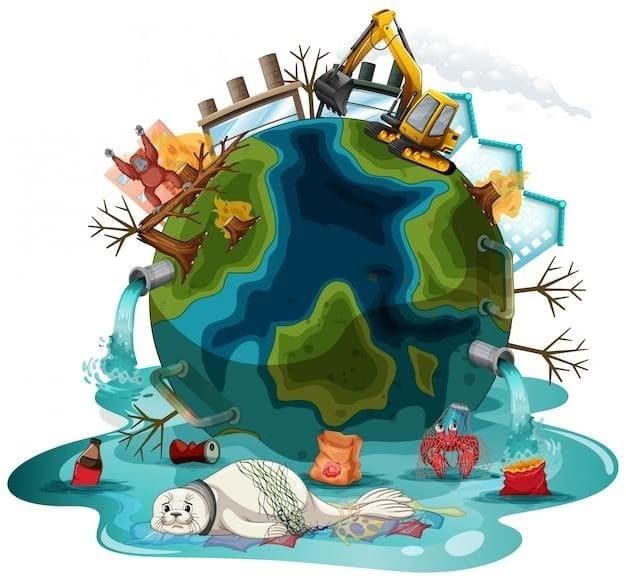
What is Pollution?
- When land, water, and air get dirty with harmful things like wastes, chemicals, and other bad materials, it is called pollution.
- The harmful things that cause pollution are called pollutants.
- Pollution makes the environment unsafe and unhealthy for all living beings.
Pollution: Types, Causes, Effects and Prevention
Pollution can be of many types: air pollution, water pollution, noise pollution, and land pollution.
Air Pollution
When harmful things like smoke, gases, and tiny particles mix with the air, it is called air pollution. These harmful things are called pollutants. Air pollution is dangerous for our health because breathing polluted air can cause harmful diseases.
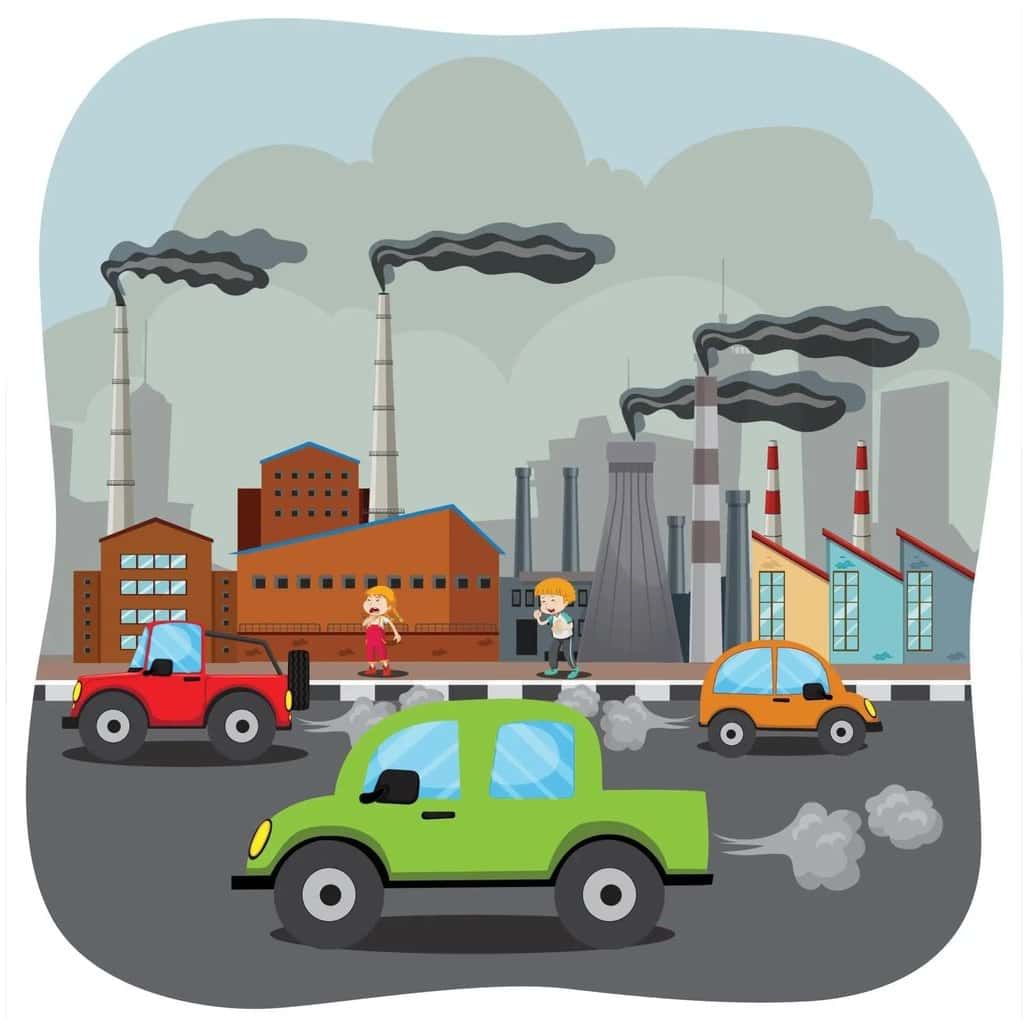 Causes of Air Pollution
Causes of Air Pollution
- Smoke coming from vehicles like cars and bikes, factories, and power plants.
- Smoke from burning wood and coal for cooking in villages.
- Dust storms in desert areas.
- Smoke from forest fires.
- Ash from power plants and volcanic eruptions.
- Bursting firecrackers.
Effects of Air Pollution
- It causes diseases like asthma, bronchitis, or permanent lung damage.
- It leads to watery eyes, headaches, and difficulty in breathing.
- It causes coughing and wheezing in children.
- It increases the Earth’s average temperature, which is called global warming.
- It damages the ozone layer in the atmosphere, which protects us from the harmful rays of the sun.
- It causes acid rain or polluted rain that harms living beings, forests, crops, and even buildings.
Prevention of Air Pollution
- Use public transport, cycle, or walk to reduce the use of vehicles.
- Keep vehicles in good condition so they produce less smoke.
- Use CNG (compressed natural gas) in vehicles instead of petrol or diesel.
- Do not burn dry leaves and waste in the open.
- Stop cutting trees and forests.
- Plant more trees and take care of the ones already around us.
- Use liquefied petroleum gas (LPG) for cooking food instead of burning wood.
- Build factories away from places where people live.
- All factories should use the latest technology and machines to reduce smoke.
- Reduce smoke from power plants by using smoke filters.
- Use more solar energy and wind energy instead of fossil fuels for our energy needs.
Fun Fact
A green belt is an area of land with fields or parks around a town or city, where people are not allowed to build houses or factories by law.
Case Study: Delhi Smog
Delhi is one of the most polluted cities in the world. For the last few years, Delhi has been facing smog, especially during the winter months. Smog is a mix of smoke and fog, making the air pollution in Delhi very high. In 2017, the pollution level during smog became so bad that the government had to order schools to close for a few days to help children stay safe. Many people faced breathing problems during this time and were advised by doctors to wear pollution masks to protect themselves from the harmful air. The government also banned the use of diesel generators for a few days to avoid more air pollution.
Water Pollution
When harmful things like sewage, chemicals, and waste materials are added to water, it is called water pollution. The harmful things added to water are called water pollutants.
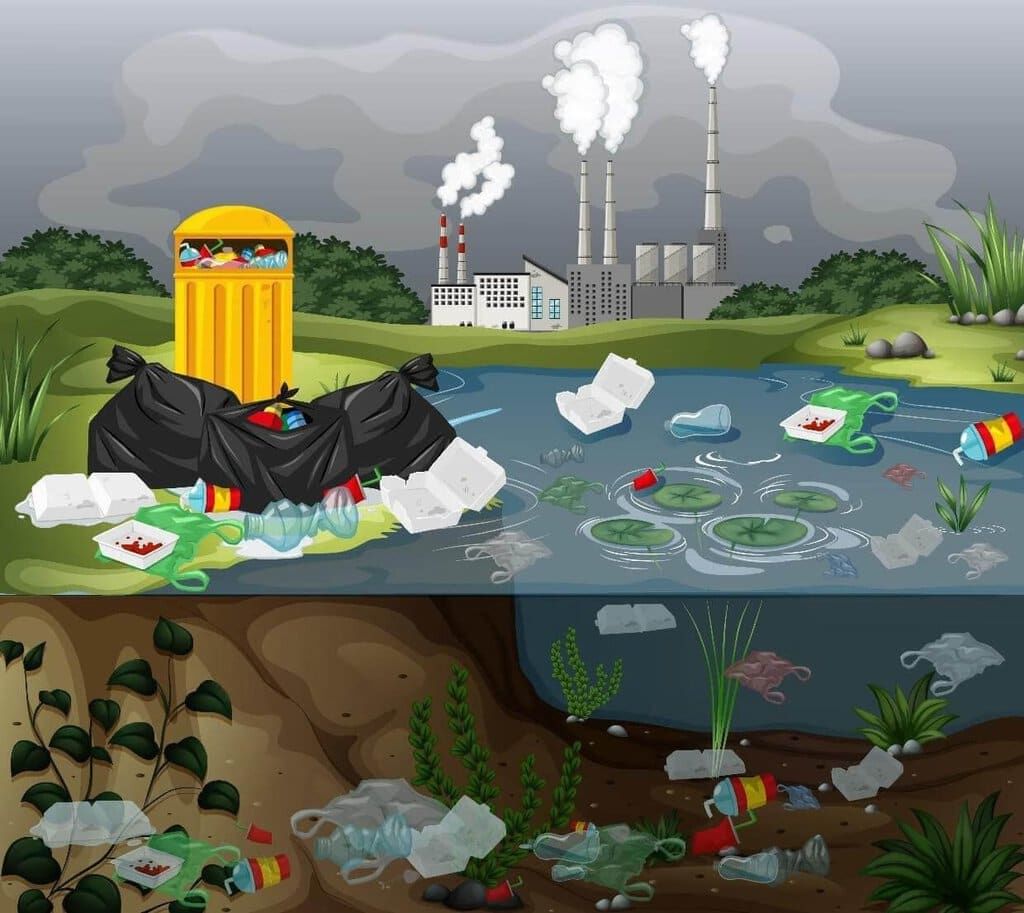 Causes of Water Pollution
Causes of Water Pollution
- Throwing garbage and sewage from homes into water bodies like rivers and lakes.
- Releasing poisonous chemicals and other waste materials from factories into rivers.
- Washing clothes and using soaps and detergents near water bodies.
- Using harmful chemicals on crops that reach water bodies with rainwater.
- Oil spills from ships into the sea, which happens due to accidents caused by human error or natural reasons.
- Sea birds and marine animals like mammals are most affected by oil spills.
Effects of Water Pollution
- Drinking and using polluted water can cause water-borne diseases like typhoid, jaundice, skin diseases, and cancer.
- Pollutants in water can lead to the death of plants and animals living in water bodies.
Prevention of Water Pollution
- Stop throwing waste materials into water bodies.
- Stop washing dirty clothes in water bodies.
- Treat industrial waste and sewage before releasing them into water bodies.
- Use fewer chemicals while farming.
Case Study
The Ganga is one of the most polluted rivers in the world today. The pollution level in the Ganga has been rising for many years because many towns and cities near the river throw large amounts of garbage, sewage, and industrial waste into it. Many efforts have been made to clean the river, but they have not worked well. In 2014, the Indian government started the Namami Ganga project to clean the river, but it has not yet achieved the desired results.
Noise Pollution
Very loud sound above the normal level is called noise pollution. Loud noise is a common problem nowadays.
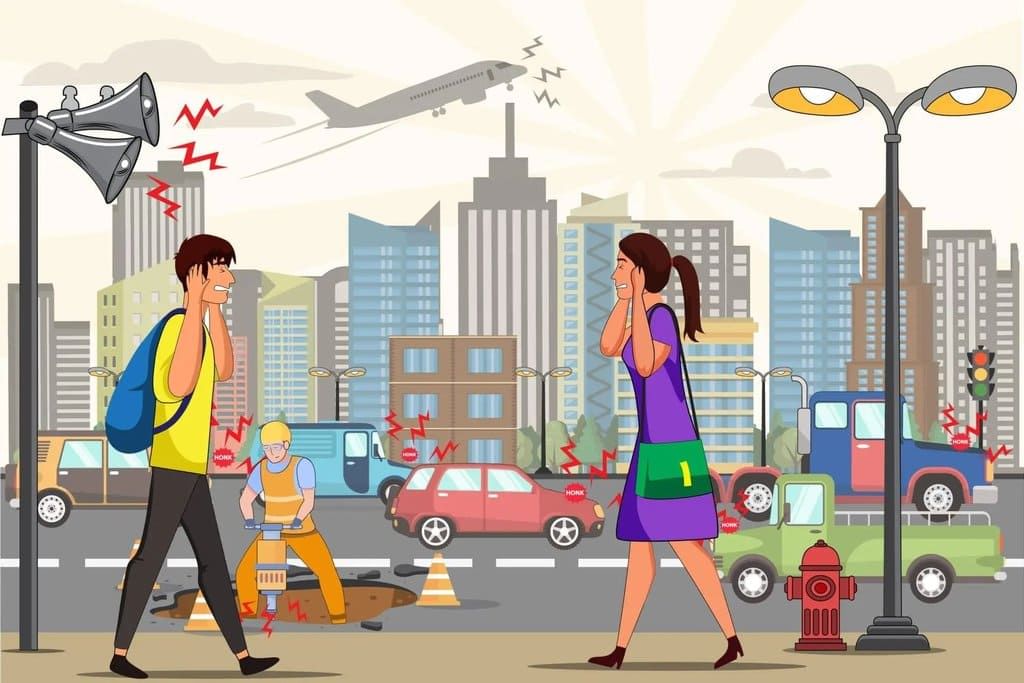 Causes of Noise Pollution
Causes of Noise Pollution
- Sound made by horns of vehicles like cars, bikes, trucks, and trains.
- Sound made by airplanes during takeoff and landing.
- Sound from machines in factories and construction sites.
- Loudspeakers playing at high volume.
- Playing music systems and televisions at high volume.
- Bursting firecrackers.
Effects of Noise Pollution
- High sound levels around us can cause irritation, headaches, and anxiety.
- It can lead to lack of sleep.
- It can cause temporary or permanent loss of hearing.
Prevention of Noise Pollution
- Put silencing devices in vehicles and industrial machines.
- Use automobile horns less often.
- Plant trees along roads and around buildings to absorb and reduce sound.
- Play music systems and televisions at low volume.
- Stop using loudspeakers after 10 p.m.
- Build noise-producing industries away from places where people live.
Case Study
In 2011, the Centre for Science and Environment (CSE) did a study that showed Delhi has some of the noisiest roads in India. A new study by a hearing test app, Mimi, tested 200,000 people in 50 cities around the world, including Delhi and Mumbai, and found that noise pollution was very high in Delhi. People in Delhi had the most hearing loss compared to their age because of the loud noise around them.
Land Pollution
Land pollution is also called soil pollution. When harmful and toxic chemicals are added to the soil, making it infertile or unusable, it is called land pollution.
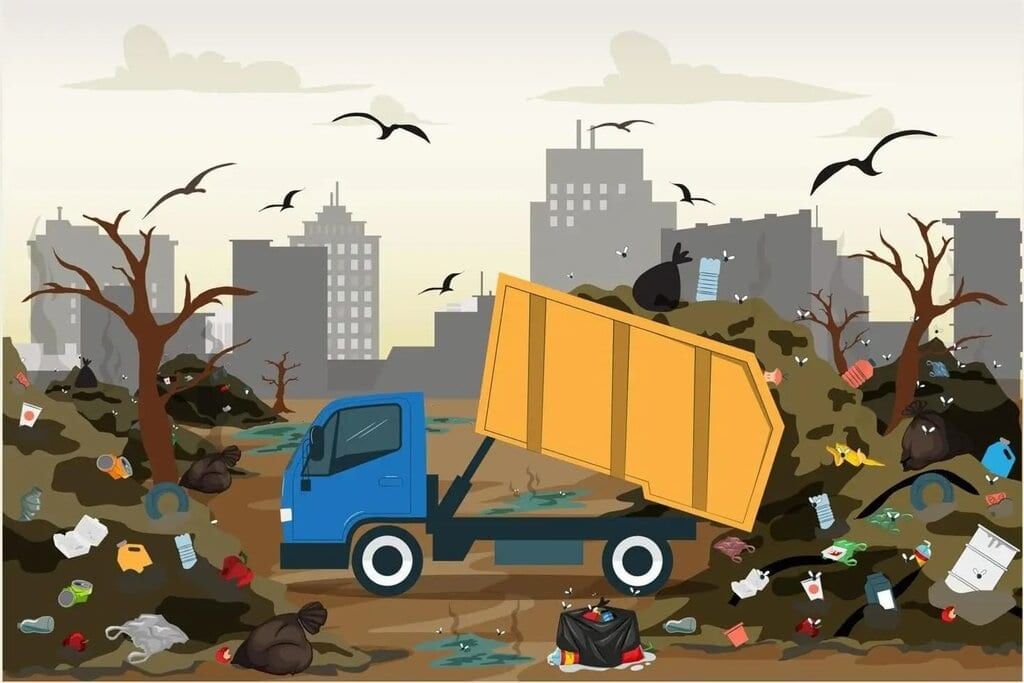 Causes of Land Pollution
Causes of Land Pollution
- Using too many pesticides, insecticides, and fertilizers on crops.
- Throwing industrial and household waste on land.
- Cutting down trees in large numbers, which leads to the loss of the top layer of soil.
- Accidental oil spills that happen during transportation.
Effects of Land Pollution
- Land pollution reduces the fertility of the soil, which lowers farming productivity.
- Chemicals in the soil get absorbed by plants and reach human and animal bodies through food.
- Chemicals in the soil can enter underground water, which can cause diseases when we drink it.
Prevention of Land Pollution
- Reduce the use of pesticides, insecticides, and fertilizers.
- Plant more trees and take care of the ones already around us.
- Avoid throwing waste in the open.
Points To Remember
- When land, water, and air get dirty due to wastes, chemicals, and other harmful materials, it is called pollution.
- The things that cause pollution are called pollutants.
- Pollution can be of four types: air, water, noise, and land pollution.
- When harmful substances like smoke, gases, and particles are added to the air, it is called air pollution.
- Breathing in polluted air can cause harmful diseases.
- When harmful substances like sewage, chemicals, and waste materials are added to water, it is called water pollution.
- Very loud sound above the normal level is called noise pollution.
- When harmful and toxic chemicals are added to the soil, making it infertile or unusable, it is called land pollution.
Glossary
- Emission: The act of producing and sending out gas, heat, etc., into air
- Filter: A device to remove unwanted material
- Treating: A process to remove impurity and improve the quality
|
52 videos|175 docs|32 tests
|
FAQs on Pollution Chapter Notes - General Science Class 8 (Maharashtra Board)
| 1. What are the main types of pollution and how do they differ from each other? |  |
| 2. What are some common causes of pollution? |  |
| 3. What are the effects of pollution on human health and the environment? |  |
| 4. How can pollution be prevented or controlled? |  |
| 5. Why is it important to address pollution, and what can individuals do to contribute? |  |















